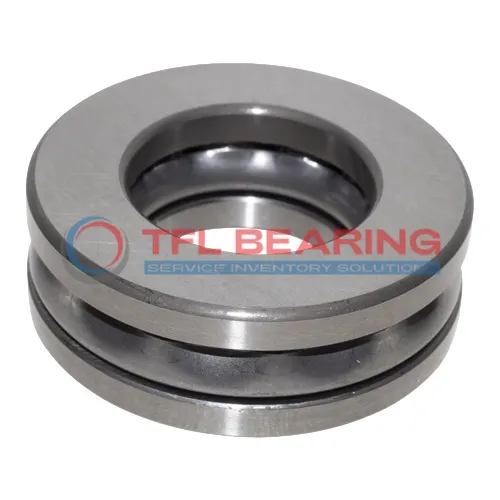
The D11 is a thrust ball bearing measuring 1.125″ in bore diameter and 2.094″ in outer diameter, with a compact width of 0.625″. Made from durable 52100 chrome steel, it handles thrust loads up to 6900 lbf and operates smoothly at speeds up to 3600 RPM.
Its outside band design provides stability, while the chrome steel construction ensures long-lasting performance. The bearing requires regular lubrication for optimal use and works well in temperatures from -30°C to 110°C.
This model is ideal for applications like automotive components or industrial machinery where thrust loads are common. Weighing just 0.33 lbs, it’s lightweight yet robust for its size. Compliant with RoHS and REACH standards for safe use.
"*" indicates required fields
Why Choose D11 Bearing for Precision Tasks?
D11 Bearing is crafted from 52100 chrome steel, offering excellent durability and resistance to wear.
Its dynamic thrust load capacity of 6900 lbf ensures reliable performance in demanding applications.
The precise tolerances of D11 Bearing allow for smooth operation, making it ideal for precision tasks.
With a temperature range of -30° to 110°C, it performs well in various environments.
How Is D11 Bearing Engineered for Reliability?
D11 Bearing features a robust design with chrome steel rings and balls, enhancing its load-bearing capabilities.
The static thrust load capacity of 14000 lbf ensures stability under heavy loads.
Its inch-based measurements and tight tolerances provide consistent performance.
D11 Bearing requires lubrication, which helps maintain its efficiency over time.
Built for Durability: D11 Bearing
D11 Bearing’s 52100 chrome steel construction ensures long-lasting performance even under high stress.
The dynamic thrust load rating of 6900 lbf makes it suitable for heavy-duty applications.
Its width tolerance of -0.005″ to +0.005″ ensures a precise fit.
D11 Bearing operates smoothly within a wide temperature range, adding to its versatility.
Industrial Uses of D11 Bearing
D11 Bearing works well in machinery like lathes and presses, where its inch sizing fits standard US equipment. The chrome steel construction handles thrust loads reliably, even in demanding conditions.
Where Is D11 Bearing Used?
You’ll often spot D11 Bearing in automotive gearboxes, where its 1.125″ bore suits many drivetrain components. Its tolerance range ensures smooth operation under varying loads.
Built for Heavy-Duty Use: D11 Bearing
D11 Bearing’s 14,000 lbf static load capacity makes it suitable for industrial presses. The required lubrication helps maintain performance in high-temperature environments.
Automotive vs Industrial: Applications of D11 Bearing
In cars, D11 Bearing supports clutch mechanisms, while factories use it for conveyor systems. Its 2.094″ outer diameter balances space constraints and load requirements.
Perfect Fit for Automation: D11 Bearing
D11 Bearing fits neatly into robotic arms, where its 0.625″ width saves space without sacrificing thrust capacity. The chrome steel balls ensure consistent movement over time.
"*" indicates required fields